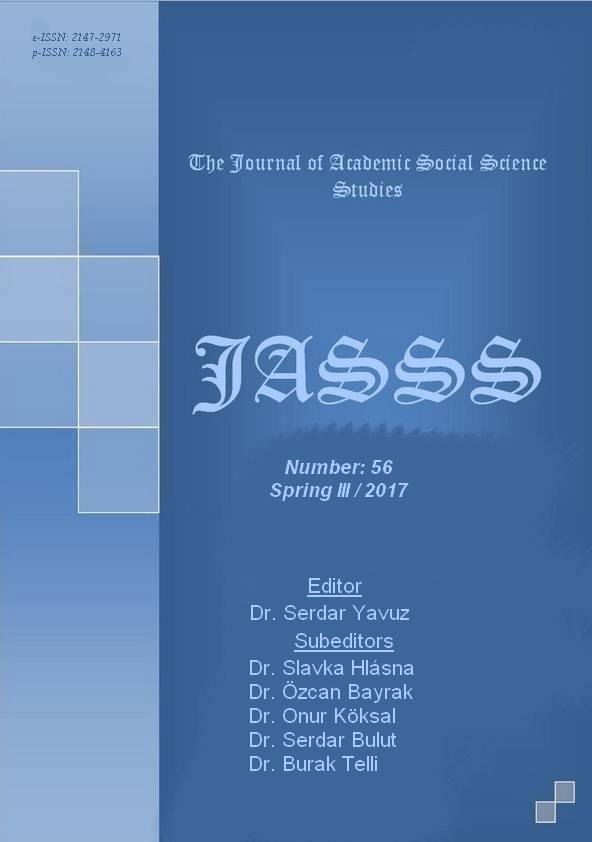Author :
Abstract
Dinamik bir kavram olan moda; kültürel, politik, psikolojik, ekonomik ve teknolojik faktörlerin etkisinde devinim halindedir. Gelişmekte olan teknoloji, moda sektöründe artan rekabeti beraberinde getirmiştir. Rakipleri geride bırakarak, sektörde yer edinebilmek adına, yeni teknolojilerin kullanımı moda sektöründe oldukça önemlidir. Bu bakımdan moda tasarımcısı özgün olmalı; yeni teknoloji ve malzemeleri yakından takip edebilmelidir. Önceleri sadece teknik, medikal veya askeri amaçlı kullanılan, teknik ve akıllı tekstiller, günümüzde ünlü modacılar tarafından tercih edilmeye başlanmıştır. Teknik tekstiller, kısaca, bir fonksiyonu için kullanılan tekstillerdir (Emniyet kemerleri, güç tutuşur kumaşlar vb.). Akıllı tekstiller ise elektrik elektronik mühendisliği, bilgisayar mühendisliği, tıp ve benzeri birçok alanı kapsayan disiplinler arası çalışmalar sonucu üretilen tekstillerdir. Akıllı tekstiller, herhangi bir etkiyi algılama veya algıladığı etkiye tepki verebilme özelliklerine sahiptirler. Malzeme teknolojilerindeki gelişmelerin artması ve mikro boyutlarda malzeme üretilebiliniyor olması, akıllı giysilerin kullanımını arttırmıştır. Dünyaca ünlü moda tasarımcıları ve şirketler tarafından akıllı giysilere büyük bir ilgi uyanmıştır. Geleceğin giysileri olarak bahsedilen akıllı giysiler, özellikle sahne performansları, galalar, davetler ve partiler gibi sosyal alanlarda kullanılmaya başlanmıştır. Bu çalışmanın amacı; aydınlatma etkisi görülen akıllı giysileri, akıllılık sınıflarına göre gruplandırmak ve bu giysilerde kullanılan malzeme ve yöntemleri incelemektir. Çalışmada ünlü moda tasarımcılarının, markaların veya firmaların tasarlamış oldukları, ışık yayan giysilerin incelenmesinde araştırmacılar tarafından geliştirilen analiz formu kullanılmıştır. Analiz formu ile giysilerin, akıllılık sınıflarına göre kullanılan malzeme ve yöntemler, ilişki tabloları oluşturularak açıklanmıştır. Sonuç olarak; ışık yayan giysilerde en çok LED kullanımı gözlemlenmiştir. Giysilerde aydınlatma özelliği sağlayan yöntemler arasında ise en çok sensörlerin (biyosensörler, hareket sensörleri vb. ) kullanıldığı görülmektedir.
Keywords
Abstract
Fashion is a dynamic concept that is triggered by social, cultural, economic, political, and psychological and technological factors. Developing technology has increased competition in fashion sector. The use of new technologies is crucial in the fashion industry in order to be able to take place in the sector and leaving the competitors behind. In this respect, the fashion designer should be original, able to closely follow new technology and materials. Technical and smart textiles, which are used primarily for technical, medical or military purposes, are now being preferred by famous fashion designers. Technical textiles, briefly, are textiles used for functions (seat belts, flammable fabrics, etc.). Smart textiles are produced as a result of interdisciplinary studies covering a wide range of fields like electrical and electronics engineering, computer engineering, medicine. Smart textiles have the ability that can perceive any effects or can react perceived effects. Increase in material technologies and production of materials in micro dimensions have increased the use of smart clothing. There is a great interest in smart clothes by world-famous fashion designers and companies. The smart clothes mentioned as the clothes of the future have begun to be used in social areas such as stage performances, galleries, invitations and parties. The aim of this study is; to examine the smart clothes which have lighting effect and grouping them according to smart classification and examining materials and methods used in these clothes. In the study, analytical forms which developed by researchers were used for illuminated smart clothes were designed by world famous fashion designers, brands or companies. By using analysis forms, according to smart classifications of clothes, the materials and methods used were explained by using the Crosstab. As a result; it has been observed that the use of LEDs is widespread at illuminated clothes. It is observed that sensors (biosensors, motion sensors, etc.) are widely used among the methods that provide illumination in clothes.





